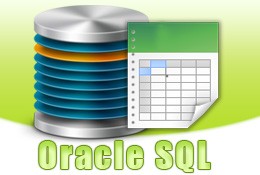Oracle in Database Engineering and Grid Computing
Now a days Oracle is widely used in each and every organization, industry, and corporate sector. It runs virtually on any computer system. Nothing to worry about its desired system or platform. Like Java, it runs in any platform. Oracle is the largest database and it is widely used. Oracle can easily be used some operation like entering data into database, modify it, delete it and retrieve the required data from the database. It uses some common English like statements as its command through Structured Query Language. This language used to enter the data, modify it and retrieve it from database in oracle. We can say that Oracle is a large sea in which we can store a number of data with guaranteed security.
Oracle is fourth generation database. We can say that Oracle is a collection of various databases. It is used to store the data and information in the database. It can widely used in any department for storing data in multi user as well as single user environment. In multi user environment which means more than one user can access the data from the database at same time. But in single user, only one person can access the database at a time. Oracle database is more flexible in use. It is very cost effective and easy to use. So that every organisation has accepted this type of database to store their data and information.
Introduction to Grid Computing
Grid computing is one type of IT architecture. It produces lower cost enterprise information system. Grid computing is used to solve different types of common problems in IT business sector like system failure, system maintenance, etc. The grid computing delivers higher quality of services in lower cost. It has greater flexibility. Higher quality of services result no or little failure in the systems. Lower cost increases the utilization as well as reduces the management and maintenance cost.
IT resources managed in a grid computing
The IT resources managed in a grid computing include:
- Infrastructure : This includes the hardware and software which are used to store the data in the database and execute in the program execution environment.
- Application : This includes the program logic and flow which define the specific business processes.
- Information : This includes the desired meaning of data which are related business and to be used to conduct business.
Infrastructure Grid
Infrastructure grid includes the hardware and software which are used to store the data in the database and execute in the desired program execution environment. The hardware resources includes memory, storages, processors, networks. The software resources include database, storage management, system management, application servers, and operating system. Virtualization of infrastructure resources means pooling resource together and allocate them to the appropriate consumers based on policies. Infrastructure is the dimension of grid computing which is most familiar and easy to understand.
Application grid.
Application resources in the grid includes the business and program logic with flow which define the specific business processes. These are the packaged applications written in any programming languages which reflects any level of complexity. Suppose a software that takes an order from the customer for show the payroll checks and sends the acknowledgement to the customer, here the process is showing the payroll checks. Virtualization of application resources involves publishing the application components for use by multiple consumers which may be people or processes.
Information grid
It is the third dimension of grid computing. Information grid includes the actual meaning of data which are to be used in different organisations for business purpose. These information are also be used in the database. This type of grid is very useful to answer the questions about customers or processes. Without information nothing can be happened. Information grid resources include all data in the enterprise and all metadata required to make the data meaningful. This data may be structured, semi-structured or unstructured stored in any location such as, databases, servers , file systems, etc.
Client/server architecture
Client / Server architecture in Oracle consists of two logical components. Client and Server. Clients are generally personal computers or workstations and servers are large workstations. Here client is used as a front end and server is used as a backend. Client is a database application which sends request which to be performed in the database. The server runs Oracle software and receives processes the SQL and PL/SQL statements.
Advantages of client server database system
The advantages of client server architecture are as follows:
- Client server system has cost effective platform to support applications.
- Client offers graphical interface, which is superior to the traditional command line.
- Client/server environment facilitates in more productive work by the users and efficient use of existing data.
- Client/server database system is more flexible.
- Response time and throughput time is high.
- A single database on server can be shared across several distinct client systems.
Disadvantages of client/server architecture
There are certain disadvantages in client/server architecture. These are listed below.
- Programming cost is high in initial phases.
- There is a lack of management tools for diagnosis, performance monitoring, timing and security control for the DBMS.
Execution process in DBMS
Certain steps are to be followed during the execution of commands in DBMS. These are:
- Users issue a query using particular database language like SQL.
- The passes query is presented to a query optimizer, which uses information how the data is stored to produce an execution for the evaluating the query.
- The DBMS accepts the users SQL commands and analyzes them.
- The DBMS produces query optimization plans, that is, the external schema for the user.
- The DBMS executes these plans against the physical database and returns the answers to the user.
Related Links
« Introduction to Database Environment Role of Database Administrator ( DBA ) »





Tell us Your Queries, Suggestions and Feedback